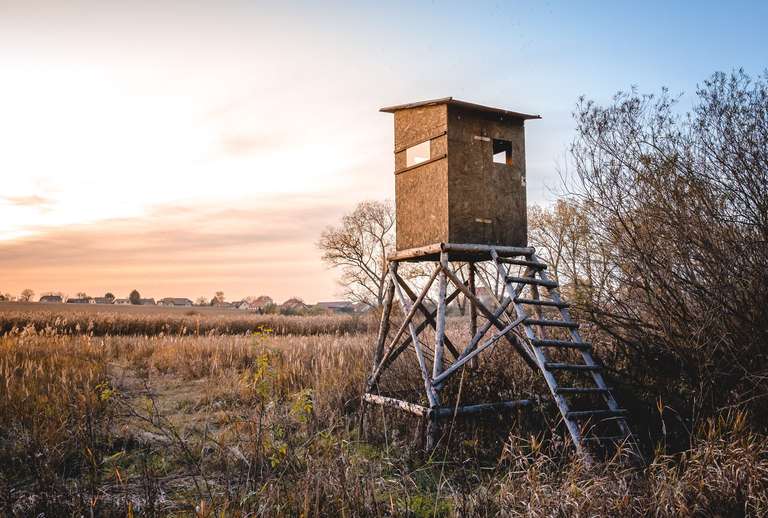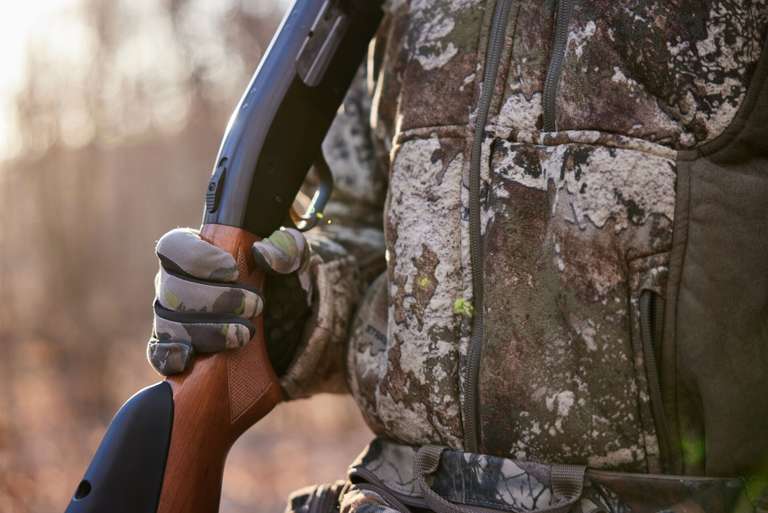9 Duck Hunting Tips for Your First Waterfowl Hunt

Waterfowl hunting offers a fascinating blend of quiet patience and fast action: there's something magical about the first sounds of wings slicing through the air as the sun breaks over your duck blind.
Whether you're a new hunter (or just new to duck hunting), the following nine duck hunting tips—from selecting the best choke to scouting—can help you get started if you're interested in learning about hunting waterfowl or want to improve your knowledge base for a successful season.
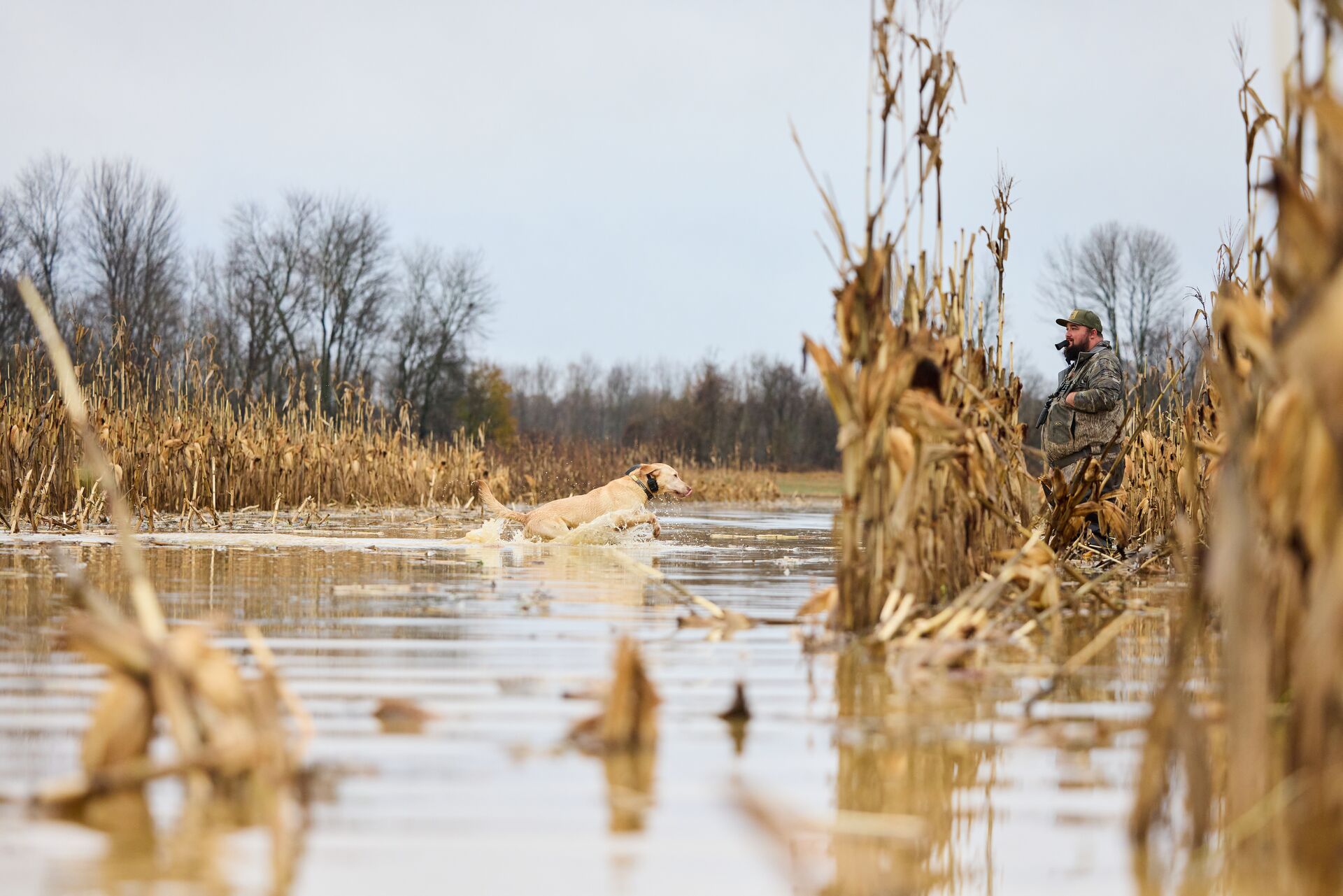
9 Duck Hunting Tips for New Hunters
A duck hunt could be your first hunt (ever), or you could be a whitetail hunter considering a duck hunt for the first time this season. No matter why you plan to get after some waterfowl this year, the following nine tips will help you have a better hunt!
1. Bring the Right Gear
Duck hunting requires a hunting license, a state waterfowl stamp, and a federal duck stamp in most states. Be sure to check state regulations, since there are different bag limits, possession limits, and seasons for various waterfowl species.
You'll also need a 20- or 12-gauge shotgun. Use non-toxic shot such as steel, bismuth, or tungsten. Lead shot is not allowed in waterfowl hunting.
Since you'll be working in a wet environment, wear a sturdy pair of waders or hip boots and a camouflage, waterproof, and windproof insulated jacket or outer shell. Since you'll often be near other duck hunters, wear an orange safety vest or hat when you're walking to and from your blind.
Bring a warm hat, gloves, first aid supplies, a headlamp, safety glasses, hearing protection, and snacks (a thermos with hot soup, coffee, or hot chocolate always helps on a cold day).
Novice hunters may also want to bring 1–2 calls and a small set of 6–10 decoys to place in the field or pond near a blind.
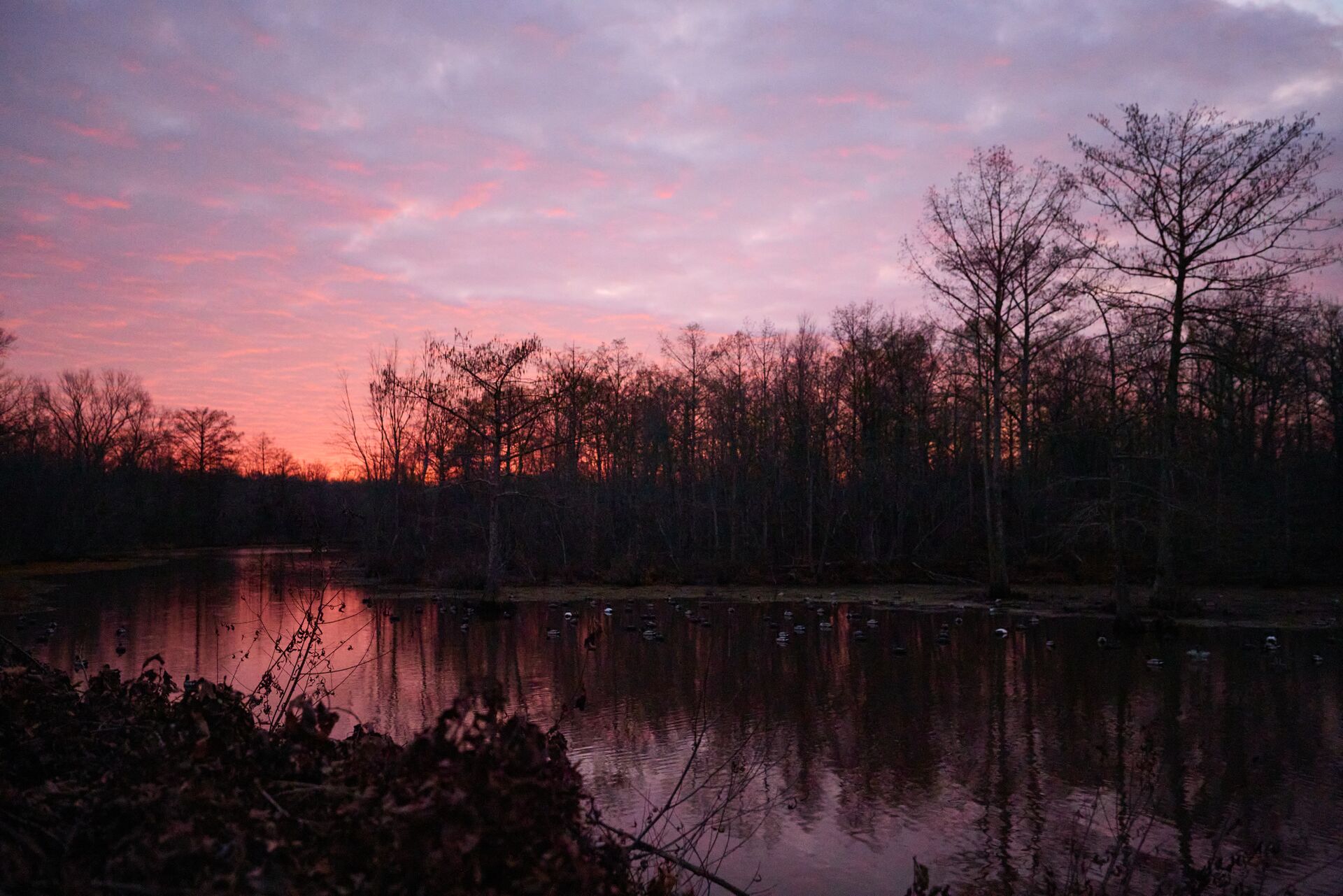
2. Duck Hunting Tips for Scouting Your Area
Get to know your waterfowl hunting spot by scouting the location at sunrise and sunset to see how the ducks are moving. Start by identifying less crowded areas so you can observe the birds' more natural behaviors. Then, look for roosting spots and nearby feeding areas, such as farm fields.
Check your spot's water level, vegetation density, and natural cover to incorporate those elements into a blind. Note the prevailing winds, as birds tend to land into the wind.
3. Choose the Right Spot for Your Hunt
Waterfowl live in a variety of habitats, including creeks, rivers, ponds, marshes, lakes, and farm fields. Ducks seem to love flooded fields, which offer water and food in a single spot.
Keep an eye out for locations that offer concealment, such as bushes, reeds, and cattails. Most importantly, always verify that you have legal access to hunt on the property.
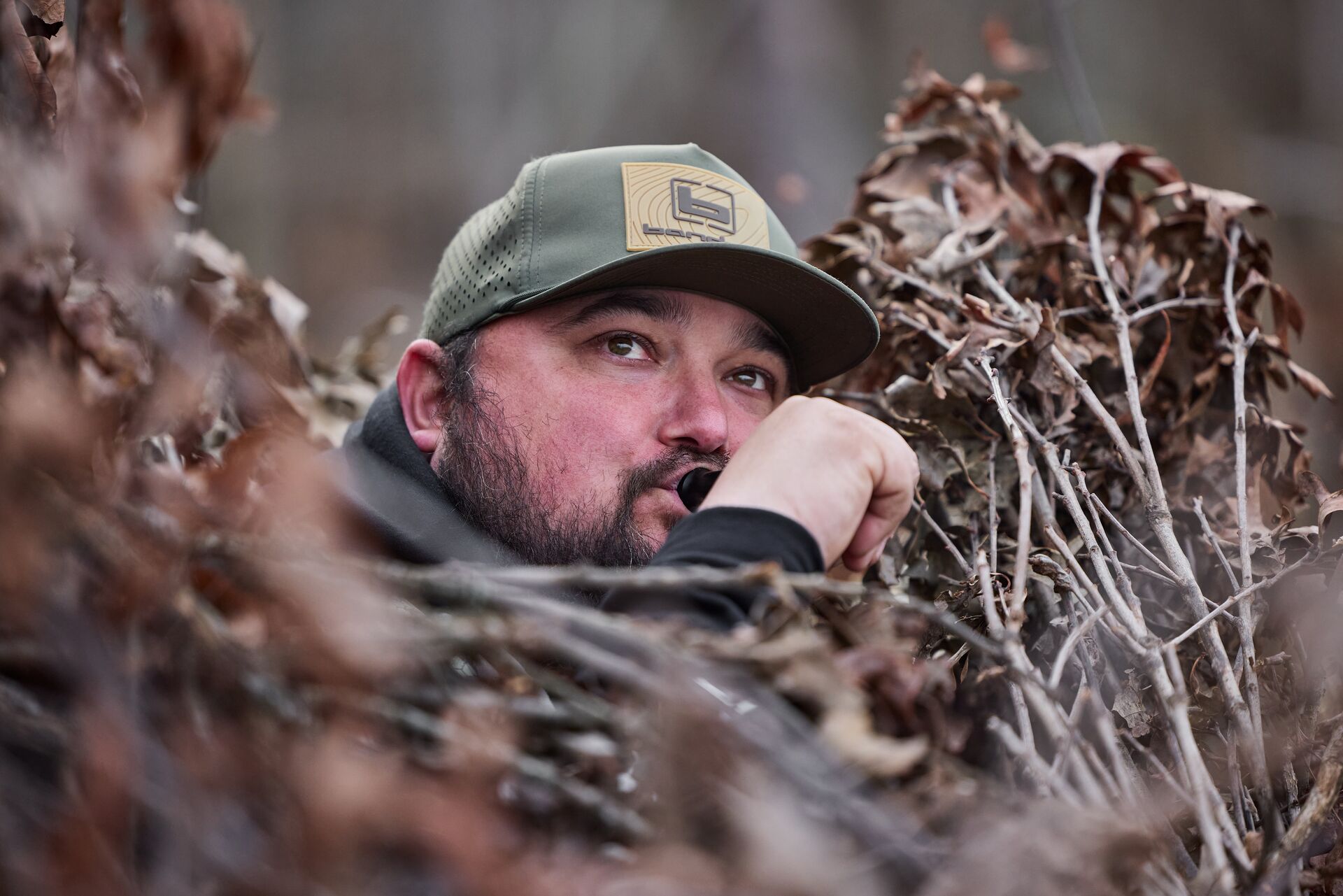
4. Learn the Best Duck Calls for Beginners
As you're learning how to get into duck hunting, calling ducks and geese is one of the more exciting parts of waterfowl hunting. It's also the most frustrating for novice callers.
The best duck calls to try as a new duck hunter are basic quacks and feeding chuckles. Practice at home and listen to calling tapes, CDs, or MP3s while driving to and from work.
Remember: Poor calling spooks birds instead of bringing them in. A few realistic, well-timed calls are far more effective than constant chattering.
If you have the opportunity, learn from a few local, experienced hunters to get a better sense of proper timing and cadence.
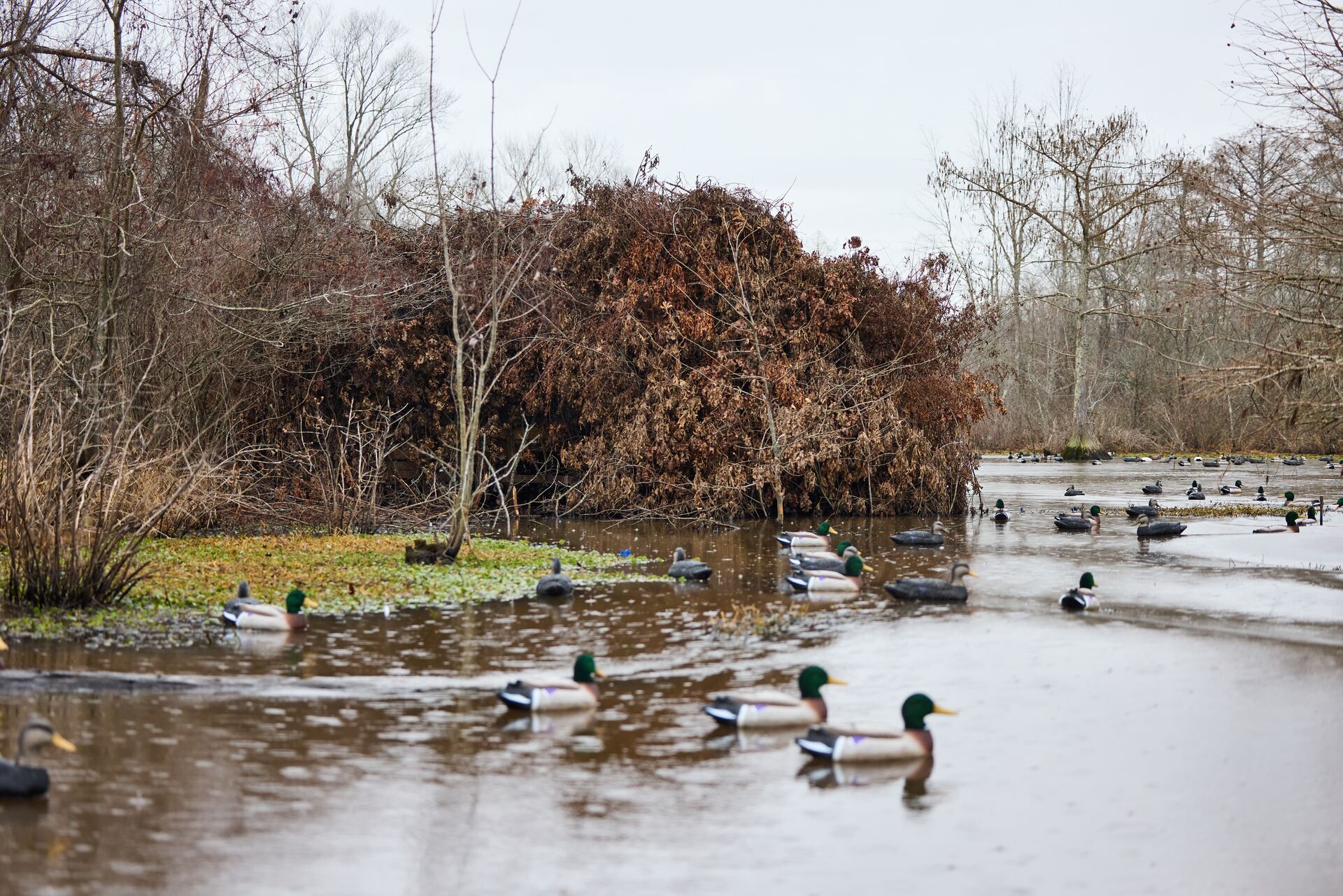
5. Understand Basic Decoy Spreads
If you read waterfowl magazines, watch duck hunting videos on YouTube, and follow hunting influencers on social media, you might be tempted to load up on decoys. Fortunately, you don't need a lot of decoys to be successful.
Start with a dozen plastic mallard decoys of drakes and hens. Use different postures—such as resting, feeding, or standing decoys—to make your setup appear more natural. If you have the budget, consider a motion decoy with a swimming feature or a spinning wing to grab the flock's attention.
Place your decoys in a clear landing zone within your effective shooting range, and select a location that allows the birds to approach into the wind.
6. Learn the Rules and Regulations
As migratory birds, waterfowl fall under the jurisdiction of federal as well as state authorities. Review all pertinent waterfowl hunting regulations for your area, and carry the required hunting license and waterfowl stamps (state and federal) during the hunt.

You must also be able to identify waterfowl species so that you are only harvesting birds that are legal during the season. If you're in doubt about the bird, don't shoot.
Your shotgun should be plugged so that it can hold no more than three shells: two in the feed tube and one in the chamber (most newer models are designed this way). As I noted earlier, you can also only use non-toxic shot.
The improved cylinder choke or modified choke will work best for closer distance shots, and full chokes are optimal for longer distances. Many manufacturers don't recommend using full chokes with steel pellets, as the inelastic pellets can damage tighter chokes.
Each hunting area will typically have rules regarding blinds, land access, and sometimes decoys. Again, familiarize yourself with the regulations specific to your chosen hunting spot.
7. Practice Shooting
Waterfowl can be fast and acrobatic flyers, so make sure you get in some quality shooting practice before the season starts. While skeet and trap can be good practice, shooting a few rounds of sporting clays will give you more realistic practice with varying angles and speeds.
Use your time at the range to make sure you have a good fit with your shotgun and can effectively manage the recoil. Keep your hunting ammunition consistent. You'll want to make sure it feeds properly to avoid surprises in the blind.
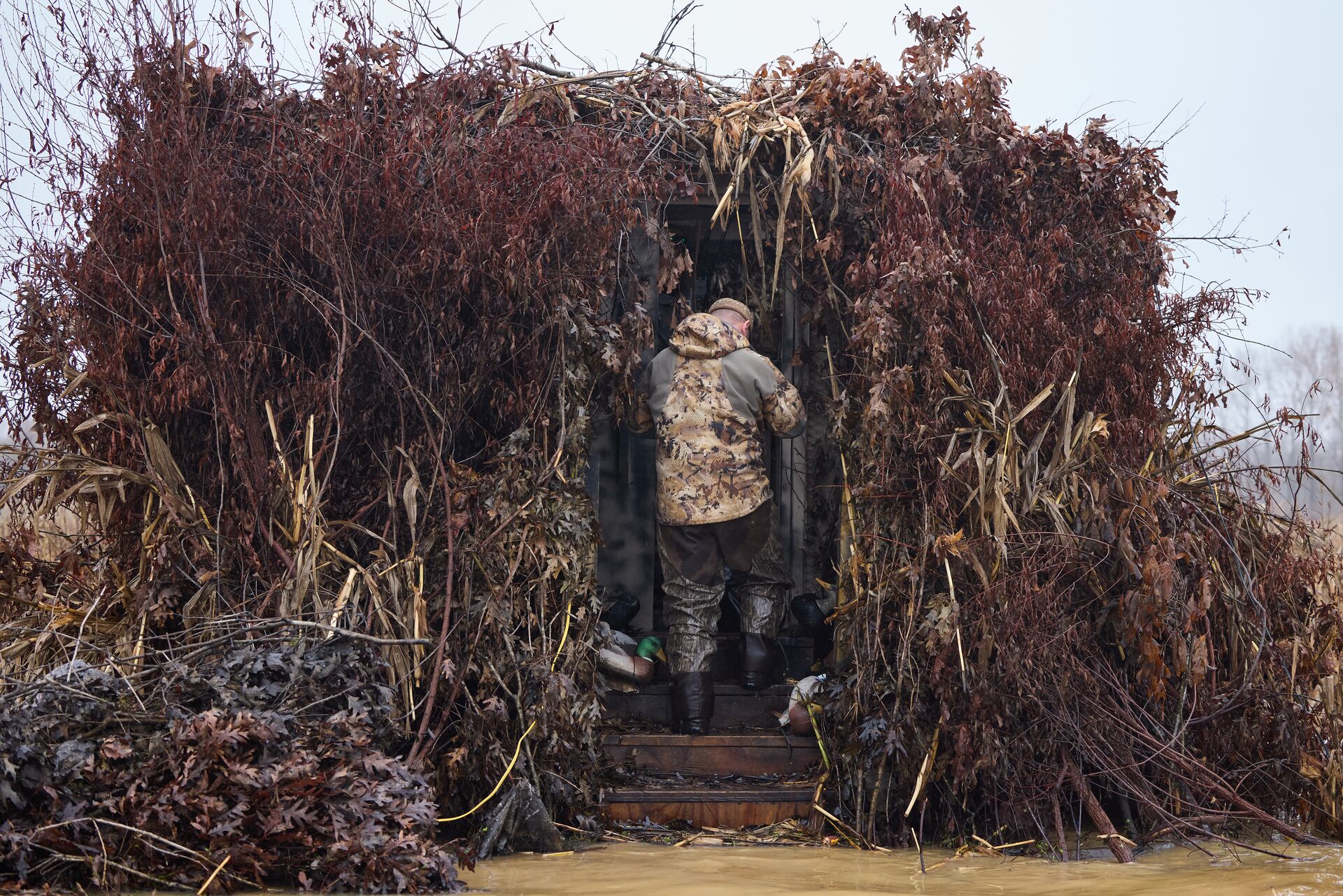
8. Stay Concealed
Like most birds, ducks and geese have incredibly sharp eyesight that can detect color and movement. That's why you need to wear camouflage clothing from head to toe, ensuring it matches your hunting environment.
Stay in the shadows whenever possible and use natural cover, such as grass, brush, and cattails, to break up your human outline and conceal your presence. When possible, use fixed or portable blinds in open fields and water to hide your position. Surrounding vegetation also helps hide your position and break up your outline.
Always keep your movement to a minimum, and pretend you're frozen in place once the ducks start coming in for a landing. Once the birds are within range, move quickly and with precision.
9. Stay Safe
Nothing can ruin a great hunt faster than a safety issue.
Before you hunt, complete a state-authorized hunter education course (like the courses we offer here at ilearntohunt) that covers everything from firearm fundamentals to creating safe zones of fire in the field.
If you're hunting ducks from a boat, always wear a life jacket and follow your state's rules for watercraft safety and regulations.
As with any hunt, share your plans with a family member or close friend. Include your expected location and anticipated arrival and departure times.

A Hunter Safety Course Helps You Have a Safe and Successful Duck Hunt
These duck hunting tips will give you a good head start on your first waterfowl season. Start with the right basic gear, know your hunting spot, practice your marksmanship, know how to conceal yourself, and learn a few of the best duck calls, and you'll be on your way to a fantastic hunt.
If you're new to duck hunting (or hunting in general), make sure you've met your state's hunter safety education requirements before heading out. An online, comprehensive, and interactive hunter safety course through ilearntohunt teaches essential firearm safety skills, critical safety protocols for being in the field, and ethical hunting practices to give you the knowledge and confidence to make the most of your time in the duck blind.
Make sure you're prepared for duck hunting season!
Take the ilearntohunt course for your state (sooner rather than later).
Frequently Asked Questions (FAQs)
We have answers to your questions about how to get into duck hunting!

